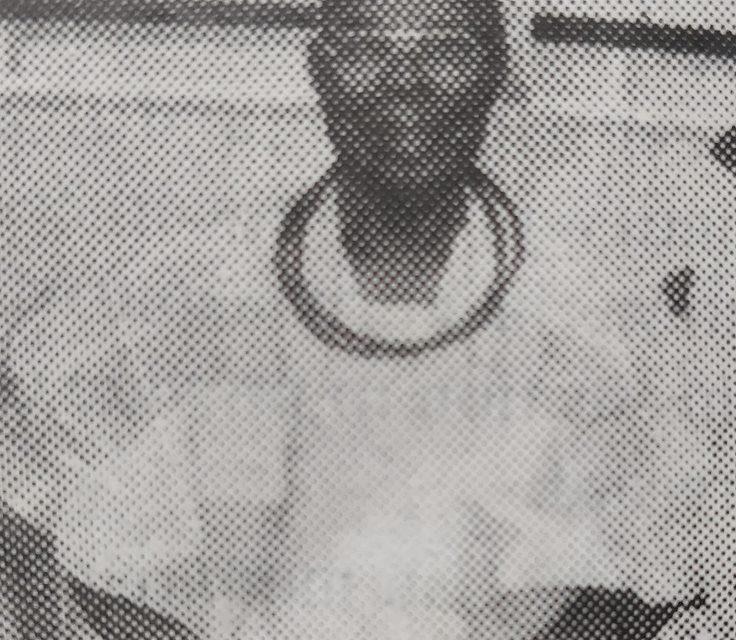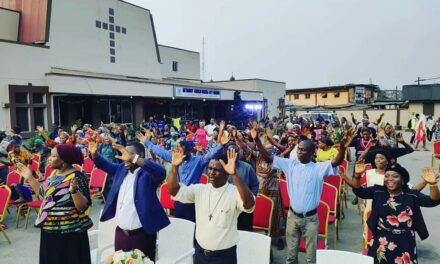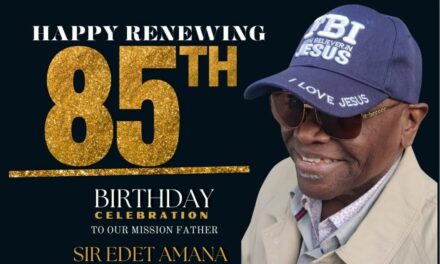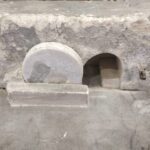On this day, thirty years ago, 11th June, 1989, Loja Omolade Adeyokunnu, the third Loja of Osu, the Headquarter, Atakumosa West Local Government, Osun State ‘answered the imperative call of death, having spent seventeen years on the throne.’ The history of Osu as a community ‘is a conglomerate of separately founded homesteads (Apoles) or camps by warriors and hunters mostly of Ijesa in origin.’ Dire Goke Arimoro, in one of his books, Osu from the Cradle explained that many of these homesteads had been founded in the late 17th and 18th centuries. According to him, ‘the amalgamation of the homesteads which became the harbinger of Osu community of today only occurred in the middle of the 19th century.’
Osu of today as the products of about twenty traditional homesteads due to the scourge of war, especially the Yoruba civil wars of the 1820s to 1830s, intra and inter-communal clashes has metamorphosed into eleven quarters and numbers of streets. In order not to make the apoles (homesteads) in Osu easy preys for Ibadan military adventurers and further attacks on Ijesa settlements, ‘the Owa Obokun of Ijesaland between 1846 and 1858, Owa Ofokutu, ordered all dispersed Ijesa settlements to unite into fairly small settlements.’ It is important to note that, as a result of geographical expansion and civilisation within Osu community,’ some new quarters like Bolorunduro and Atakunmosa are beginning to emerge and develop.
The etymology of the word “Osu” resonates with a particular school of thought that ‘Osu’ as the name of the town and coined from the statement made by the Chief emissary (Agba Emese) of Owa Obokun of Ijesaland, when he was directed to conduct the official unification of all the ‘Apoles’ that formed Osu community.’ According to Arimoro, the following story was told to support this claim:
Oloomi Adimula wi ki mi wi han hin pe libeee no oun su ‘in in jo si o
Libi a wa a a gan an lo i ki mi su ‘in in jo si.
O wi ibe laa san in soo
Ibe laa san in somo
Ibe ni hin ti a maa gbeeru si
Lagbara Owa’bokun Ijesa.
The word ‘Osu’ was coined from the above phrases in line 1 and 2. That is, Owa ‘Su’ in in jo (Unite you). Owa, the king of Ijesaland as God’s voice of unity and authority unite O-su = Osu. Beyond the difference between “Apole Osu” believed to have been founded by Pa Ariyo Ajibode and “Ilu Osu,” a confederate of separate autonomous homesteads, the origin and development of Osu monarch from looyin to an institutional monarch remains a source of inspiration and unity of purpose for Osu development. In the beginning the confederate homesteads (Apole) had its political and cultural head called ‘Looyin.’ The advent of civilisation brought to focus the need for a recognised central head. The Lojaship title was later agreed upon with the installation of an Osu Prince, Pa Oje Orisakoomilade Aderintola as the first Loja of Osu community in 1934. A Loja is a monarchical nomenclature given to an Owa Obokun Royal Prince who is made a head of a smaller Ijesa community by the Owa Obokun Adimula throughout Ijesa land. Loja Aderintola reigned for four years before he joined his ancestors in 1937. He was succeeded by a non indigene of Osu, but a prince of Owa, Loja James Abimbola Adekanye in 1939. He reigned for thirty two years before he joined his ancestors in 1971. He was interred on 22nd August, 1971.
Loja Adekanye was succeded by Loja Omolade Adeyokunnu. He was not an indigene of Osu, but a prince of Owa Obokun. Loja Omolade Adeyokunnu’s reign ‘witnessed a dramatic development in the socio-political and economic life of the community.’ It is on record that ‘many of the intractable problems that had hitherto been the hall-mark of the community’s life were resolved during his tenure. An acceptable Loja’s court was completed during his reign. The issue of Oke-Omi/Oke-Osu was eradicated and for once the recognition of Osu as a monolithic cultural group became a reality.’ It was during Loja Adeyokunnu’s reign that ‘Osu became the Headquarters of Atakumosa Local Government Area … Electricity was extended to Osu. The second Grammar School, Osu Community Grammar School was founded and the issue of a central market for Osu was considerably resolved.’
Loja Adeyokunnu was a lover and mentor of youth and he was very accessible. Among Osu youths that were very close to Loja Adeyokunnu include Sir Folorunso Ezekiel Ogunjuyigbe and Mr Dire Goke Arimoro. When I returned to Osu in 1981 as a primary school teacher, I enjoined spending hours with Baba Loja around his throne/office. Loja Adeyokunnu was a major inspiration in the emergence and formation of the Great Reformers Club, Osu. Spiritually, Loja Adeyokunnu was a spiritual catalyst. He used the palace to unite all the churches especially, the beginning of the New Year first week morning prayers that normally climaxed at the palace was a source of renewal for Osu community. Loja Adeyokunnu’s spirituality was a source of encouragement for many Osu’s sons and daughters to come home and be part of the development. Among them were Pa J T Jegede, a business tycoon based in Kano, Pa Obisesan based in Ibadan, Professor Chief Olatunde Ayoola, Chief, Rufus Fasetire, and Pa Chief Joshua Ogunleye, former President, Dockworkers Union, Lagos. With the support of the chief and few elites in the town, Loja Adeyokunnu ‘institutionalised Odun Iyo festival in 1978 which has since been a yearly festival celebrated with pomp and pageantry by all the citizens of Osu,’ and friends. With the support of Loja Adeyokunnu, Atakumosa High School Osu under the leadership of Chief Ade Adefarati experienced an unprecedented landmarks. Loja Adeyokunnu’s seventeen years reign remains ‘the period when Osu attained the apogee of her greatness.’ Loja Adeyokunnu was happily married with God fearing children, grand children and great grand children.
Like the medieval kings clothing, Loja Adeyokunnu was very fashionable, always in white and relatively simple but stylish to distinguish him from the common people. Following his transition on 11th June, 1989, all Osu indigenes resolved to filled the vacant stool with an indigene and Prince Jethro Adegoke Adejola was approved and installed as the fourth Loja of Osu on 11th November, 1989 by the Owa Obokun Adimula of Ijesaland, Owa Aromolaran II. To the glory of God, Osu monarchy has been upgraded from Lojaship by Owa Aromolaran II to an institutional monarch with beaded crown.











Recent Comments